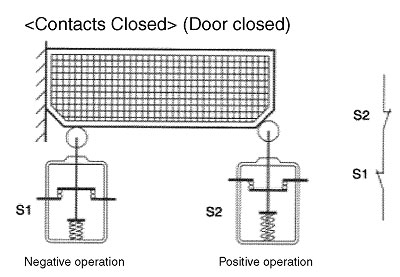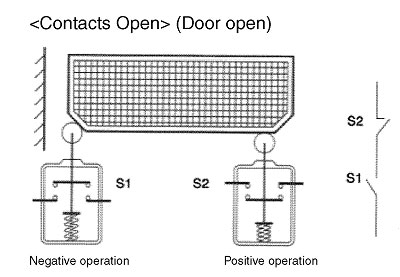What is diversity?
Common malfunctions and the probability of failure in electric products can be reduced if each product uses a variety of control circuits as well as various types of devices and components. The following are examples showing the use of diversity.
Safety door with safety components that use a combination of NC and NO contacts.
Circuits using control components that are different from each other in type.
Redundant combinations of electromechanical and electronic circuits.
The following diagram shows an example of operating a safety door using a combination of negative operation and positive operation switches.

